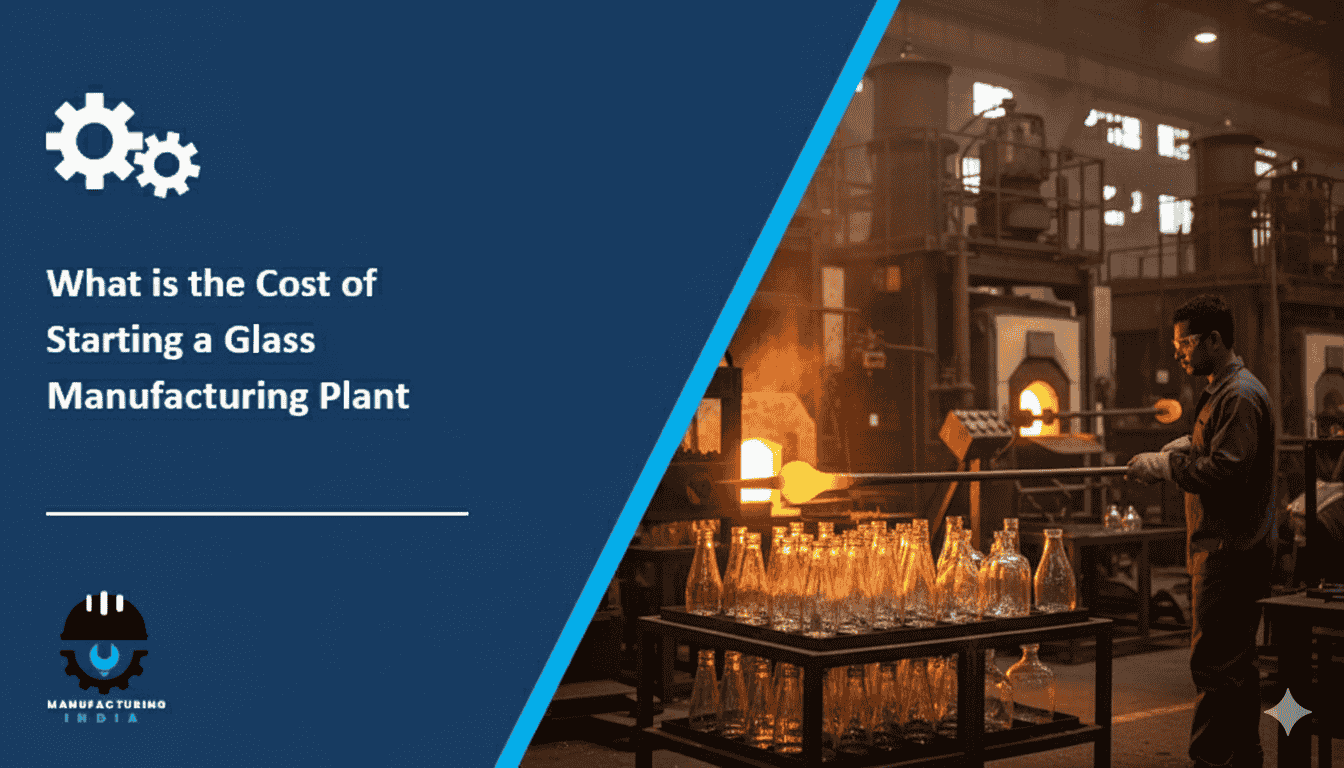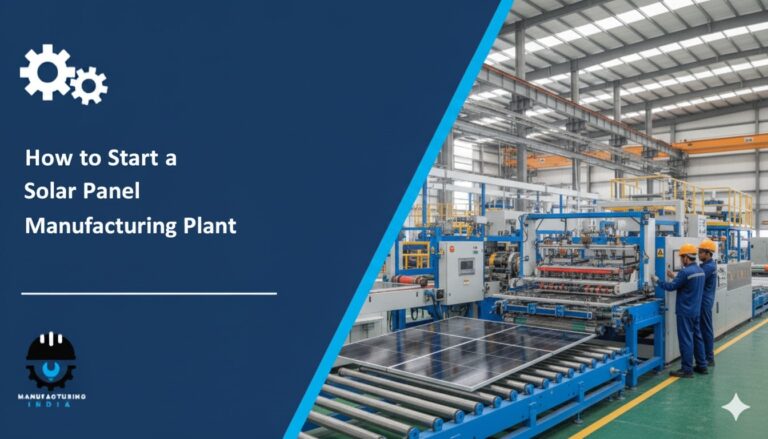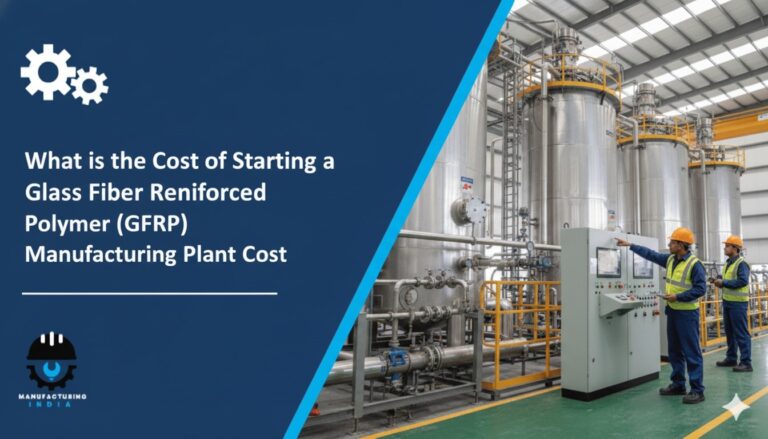
The glass manufacturing industry forms the backbone of the global construction, automotive, packaging, and consumer goods sectors, serving various segments from architectural glass to container glass and specialty glass products. With constant growth in urbanization and sustainable packaging demands, establishing a glass manufacturing plant presents a promising business opportunity.
The glass manufacturing industry is a complex and capital-intensive industry with great potential for new entrants. However, this venture requires careful planning, significant investment, and compliance with environmental and safety regulations. From raw material sourcing to regulatory requirements, every phase of the business is to be conducted with utmost precision. Businesses can streamline this process by leveraging on-demand professional resources, which provide feasibility analysis, cost estimations, and requirements for technical necessities.
Step-by-Step Guide to Setup Glass Manufacturing Facility
Step 1: Conducting Market Research and Feasibility Study
Analyzing the Market:
Beyond traditional business segments such as container glass and flat glass for construction, enterprises should consider emerging and upcoming trends. For example, demand for energy-efficient low-emissivity (Low-E) glass with enhanced insulation properties is soaring, and firms have come up with dedicated product lines featuring superior thermal performance and minimal heat transfer.
Another aspect is sustainability, where the demand for recycled glass (cullet) usage and eco-friendly production processes is rising. Several leading brands have announced initiatives for transitioning to carbon-neutral manufacturing facilities and partnering with certified glass recycling programs.
Analyze the strategies and advanced technologies offered by significant glass manufacturers in the market. For instance, advanced furnace control systems are designed for maximizing energy efficiency and product quality. These use sophisticated temperature monitoring mechanisms to achieve superior glass quality and reduced energy consumption.
Businesses need to monitor industry shifts, technological advancements, and strategic developments constantly to gain a competitive edge. Expert insights can help enterprises stay informed about market trends, competitor strategies, and innovation landscapes. Companies can make data-driven decisions to enhance their market positioning and drive sustainable growth by using tailored research.
A robust study is essential, and businesses should also consider regional factors. For instance, a plant in urban regions might focus on architectural glass due to construction boom, while a coastal area plant might cater to export-oriented production and container glass for beverage industries.
Estimate the capital needed for land acquisition, infrastructure development, furnace installation, working capital, and research and development. Recent investments in the glass manufacturing sector highlight the significant financial commitments involved in this industry.
Step 2: Business Plan Development
Include a comprehensive financial model, considering initial investment and operating costs. Address sustainability initiatives, which can attract investors and customers. For instance, leading companies are working towards goals of reducing environmental impact through use of renewable energy and sustainable manufacturing practices. Many have targeted achieving carbon-neutral operations as part of their long-term environmental vision.
Business Model: Businesses should plan whether to focus on manufacturing container glass, flat glass for architectural use, specialty glass products, automotive glass, or a combination of these approaches and build a business model accordingly.
Funding Strategy: Outline potential funding sources, including equity investment, bank loans, government grants for manufacturing sector development, or strategic partnerships with construction or packaging companies.
Production Capacity: Define your target production volume based on market analysis and available resources, considering whether to start with small-scale operations (50-100 tons per day) or aim for large-scale production (300-500 tons per day).
Marketing and Sales Strategy: Develop plans for branding, distribution channels including direct sales to contractors, glass processors, automotive manufacturers, and beverage companies, and customer acquisition through trade shows and B2B marketing.
Risk Assessment: Identify potential risks, such as energy cost fluctuations, raw material price volatility, regulatory changes in environmental policies, or challenges in skilled labor availability, and propose mitigation strategies.
Step 3: Navigating Legal Requirements and Obtaining Necessary Permits
Compliance with legal and regulatory frameworks is essential. Key steps include:
Business Registration: Register your company in accordance with local laws and manufacturing regulations.
Environmental Approvals: Obtain necessary environmental clearances, as glass manufacturing involves high-temperature furnaces that must meet emission standards for particulate matter, NOx, and SOx.
Factory Licenses: Secure licenses required for operating a manufacturing facility, including industrial safety board approvals, factory act registrations, and workplace safety compliance certificates.
Product Certifications: Aim for certifications related to glass quality standards, safety glass certifications (for automotive and architectural applications), and product liability insurance to ensure market acceptance.
Quality Certifications: Obtain certifications such as ISO 9001 for quality management, ISO 14001 for environmental management, and industry-specific testing facility approvals for product quality assurance.
Step 4: Selecting an Optimal Location and Develop Infrastructure
Choosing the right location is critical for operational efficiency. Consider factors such as:
Proximity to Suppliers: Access to raw material suppliers including silica sand, soda ash, limestone, dolomite, and cullet suppliers. Proximity to industrial zones reduces transportation costs and ensures steady raw material supply.
Logistics and Transportation: Ensure good connectivity to key markets, suppliers, and distribution facilities. Access to highways, railways, and shipping ports is essential for distributing finished products and receiving bulk raw materials.
Utilities Availability: Reliable access to electricity or natural gas for furnace operations (high energy consumption industry), adequate water supply for cooling systems and washing operations, compressed air facilities, and sufficient space for raw material storage and finished goods warehousing.
Land Size: Adequate space to accommodate current operations including furnace area, batch preparation section, annealing lehrs, cutting and processing sections, quality control laboratories, and future expansions for increased capacity. Typical requirement: 5-20 acres depending on production scale.
Step 5: Procuring Advanced Machinery and Quality Raw Materials
Investing in state-of-the-art machinery ensures efficient production and high-quality output. Essential equipment includes:
Furnace Systems:
- Glass melting furnace (regenerative or recuperative type)
- Batch mixing and feeding systems
- Furnace temperature control and monitoring equipment
- Refractory lining materials
Forming Equipment:
- Float bath system (for flat glass production)
- IS machines or blow-blow machines (for container glass)
- Drawing machines (for specialty applications)
- Molding equipment for specific products
Annealing and Cooling Systems:
- Annealing lehrs with precise temperature control
- Cooling conveyors
- Temperature monitoring sensors
Processing Equipment:
- Cutting machines (automatic and manual)
- Grinding and polishing equipment
- Tempering furnaces (for safety glass)
- Laminating equipment (for laminated glass)
- Coating application systems (for Low-E glass)
Quality Control Equipment:
- Optical quality scanners
- Thickness measuring devices
- Stress testing equipment
- Impact resistance testers
- Spectrophotometers for coating analysis
Utilities Infrastructure:
- High-capacity electrical substations or gas supply systems
- Water treatment and cooling tower systems
- Compressed air generation equipment
- Waste heat recovery systems
- Emission control equipment (scrubbers, filters)
Raw Material Requirements:
Source quality materials from reliable suppliers, including:
- Silica sand (primary component, 70-74%)
- Soda ash (sodium carbonate)
- Limestone and dolomite
- Feldspar and other fluxes
- Cullet (recycled glass, 15-30% of batch)
- Colorants and decolorants
- Specialized additives for specific glass types
- Packaging materials for finished products
Step 6: Building a Skilled Workforce
Recruiting and training skilled personnel is vital. Key roles include:
Technical Leadership:
- Glass technologists and ceramic engineers for overseeing production processes, optimizing furnace parameters, batch formulation, and maintaining operational efficiency
- Furnace engineers for monitoring and maintaining furnace operations
Operations Team:
- Furnace operators trained in temperature management
- Batch preparation specialists
- Forming machine operators
- Annealing lehr operators
Quality Control:
- Quality control specialists to ensure products meet industry standards and customer specifications
- Laboratory technicians for testing raw materials and finished products
Research & Development:
- R&D team for developing new glass compositions, improving energy efficiency, and creating innovative products with enhanced characteristics
Support Functions:
- Maintenance technicians for equipment upkeep
- Safety compliance officers to ensure adherence to environmental and safety regulations
- Sales and marketing professionals to drive market penetration and customer relationships
Companies with strong reputations in the glass industry have established comprehensive training programs to develop skilled workers, contributing to their reputation for quality and reliability.
Step 7: Implementing the Production Process
The glass manufacturing process involves multiple stages:
Raw Material Preparation:
- Receiving and inspecting raw materials for quality
- Batching: Precise weighing and mixing of raw materials according to glass formula
- Storage in silos with moisture control
- Cullet crushing and screening
Melting Process:
- Batch feeding into furnace at controlled rates
- Melting at temperatures of 1,400-1,600°C
- Refining to remove bubbles and homogenize glass
- Continuous monitoring of furnace conditions
Forming Operations:
For Float Glass:
- Molten glass flows onto molten tin bath
- Glass spreads and forms flat surface
- Controlled cooling in float bath
- Dimensional control for desired thickness
For Container Glass:
- Gob formation from molten glass stream
- Pressing or blowing in molds
- IS machine operation for bottles and jars
- Inspection of formed containers
Annealing:
- Controlled cooling in annealing lehr
- Stress relief process
- Temperature reduction from 500-550°C to ambient
- Quality monitoring during annealing
Processing and Finishing:
- Cutting to required dimensions
- Edge grinding and polishing
- Tempering or heat strengthening (for safety glass)
- Laminating (for security applications)
- Coating application (for energy-efficient glass)
- Drilling, notching, or other customization
Quality Inspection:
- Visual inspection for defects (bubbles, stones, cords)
- Dimensional accuracy verification
- Optical quality testing
- Stress analysis using polariscope
- Edge quality inspection
- Coating performance testing (if applicable)
- Impact and strength testing for safety glass
Packaging and Dispatch:
- Protective packaging with paper interleaving or plastic films
- Wooden crate or steel rack packaging
- Proper labeling with specifications
- Storage in climate-controlled warehouses
- Loading with appropriate handling equipment
Step 8: Establishing Marketing and Distribution Channels
A robust marketing and distribution strategy is essential for establishing a strong presence in the market. Consider the following approaches:
Direct Sales Channels:
- Construction companies and contractors
- Architectural glass processors
- Automotive glass manufacturers
- Furniture manufacturers
- Glass fabricators and distributors
Distribution Network:
- Regional distributors and dealers
- Glass processing centers
- Installation service networks
- Export channels for international markets
B2B Opportunities:
- Long-term supply contracts with construction firms
- Partnerships with window and door manufacturers
- Automotive OEM supply agreements
- Beverage company partnerships for container glass
- Solar panel manufacturers (for specialty glass)
Marketing Strategies:
- Participation in construction and glass industry trade shows
- Technical documentation and product catalogs
- Digital presence through B2B platforms
- Demonstration projects showcasing product performance
- Technical support and customer service excellence
Export Opportunities:
- Study international markets with growing construction activity
- Comply with specific quality standards (ASTM, EN standards)
- Establish relationships with international distributors
- Understand export documentation and shipping logistics
Step 9: Ensuring Compliance with Safety and Environmental Standards
Glass manufacturing involves high-temperature operations and chemical handling, making regulatory compliance crucial. Key measures include:
Worker Safety:
- Implement strict safety protocols for furnace operations
- Provide personal protective equipment including heat-resistant clothing, safety glasses, gloves, and respiratory protection
- Train employees on high-temperature hazards, chemical handling, and emergency procedures
- Regular safety audits and drills
Furnace Safety:
- Proper furnace design with safety interlocks
- Emergency shutdown procedures
- Refractory monitoring and maintenance programs
- Fire protection systems
Environmental Compliance:
- Install emission control systems (scrubbers, baghouses, electrostatic precipitators)
- Monitor air emissions (particulate matter, NOx, SOx)
- Water treatment for process water discharge
- Solid waste management including refractory disposal
- Regular environmental audits and reporting
Energy Management:
- Implement waste heat recovery systems
- Optimize furnace efficiency through advanced controls
- Consider renewable energy integration
- Energy audits and efficiency improvement programs
- Cullet recycling programs to reduce melting energy
Chemical Safety:
- Proper storage and handling of raw materials
- Material Safety Data Sheets (MSDS) for all chemicals
- Spill containment and response procedures
- Dust control in batch preparation areas
Governments and regulatory bodies worldwide are increasingly enforcing stringent environmental regulations. Leading glass companies have pledged to reduce their environmental impact by adopting sustainable manufacturing practices and circular economy production systems.
Step 10: Planning for Future Expansion and Innovation
Once the glass plant is fully operational, focus on scaling up production and expanding market reach. Key strategies include:
Increasing Production Capacity:
- Expand facilities by adding additional furnaces or production lines
- Upgrade to higher-capacity melting furnaces
- Modernize forming equipment for increased output
- Establish satellite facilities in different regions
Launching New Products:
- Energy-efficient Low-E glass with advanced coatings
- Smart glass with switchable properties
- Ultra-clear glass for premium applications
- Fire-resistant and bullet-resistant glass
- Specialty glass for solar, electronics, or medical applications
- Decorative and colored glass products
Diversification:
- Enter different glass segments (container to flat glass or vice versa)
- Downstream integration into glass processing and fabrication
- Development of glass fiber products
- Entry into glazing and installation services
Technology Integration:
- Advanced furnace control systems with AI optimization
- Automated quality inspection using machine vision
- Predictive maintenance systems for equipment
- Energy management systems with IoT sensors
- Industry 4.0 implementation for smart manufacturing
Vertical Integration:
- Backward integration through raw material sourcing or mining operations
- Forward integration through glass processing facilities, distribution networks, or installation services
- In-house coating and treatment capabilities
Strategic Partnerships:
- Collaborations with construction companies for long-term supply
- Technology partnerships for advanced glass products
- Joint ventures with international glass manufacturers
- Research partnerships with universities for innovation
- Sustainability partnerships for recycling programs
Sustainability Initiatives:
- Increase cullet usage to reduce raw material consumption
- Implement carbon capture technologies
- Transition to electric or hydrogen-based melting
- Circular economy models with take-back programs
- Achieve industry certifications for environmental leadership
Exclusive Insights: Unlock Hidden Market Opportunities
The rise of sustainable construction is reshaping the glass industry, with manufacturers exploring partnerships with green building projects, energy-efficient building certifications, and developers looking to incorporate advanced glazing solutions.
Advanced coating technology is a major focus, with companies investing in magnetron sputtering systems, pyrolytic coating processes, low-emissivity coatings, and self-cleaning glass technologies to differentiate products in competitive markets.
Automation and production efficiency are becoming increasingly important, with manufacturers implementing robotic handling systems, automated quality inspection, real-time furnace optimization, and integrated manufacturing execution systems.
Circular economy approaches including comprehensive cullet recycling programs, modular furnace designs for easier maintenance, waste heat utilization, and closed-loop water systems are gaining traction among environmentally conscious manufacturers.
Digitalization and Industry 4.0 are emerging as market differentiators, with predictive maintenance using AI, real-time energy monitoring, automated batch optimization, and integrated supply chain management for modern glass manufacturing operations.



